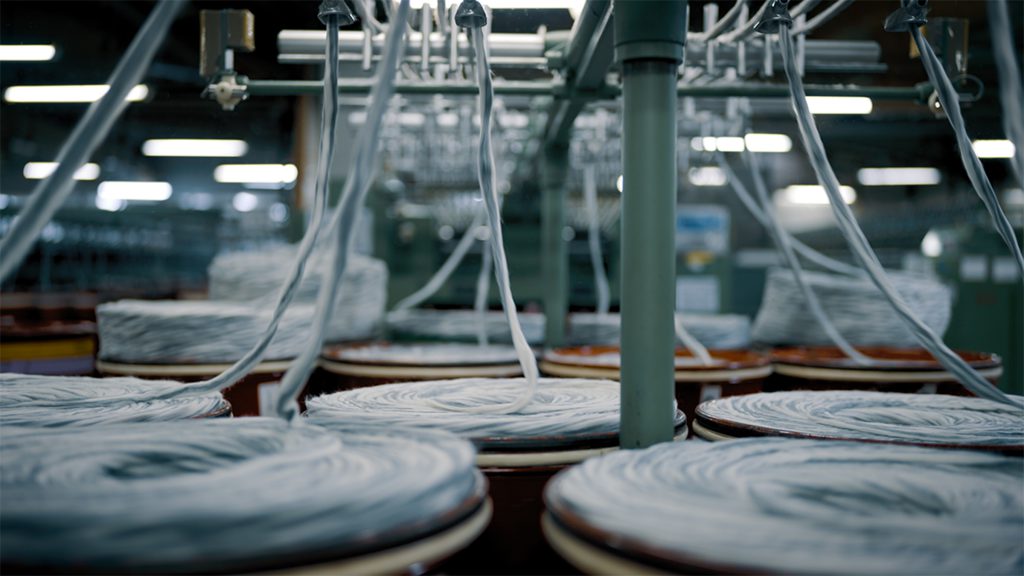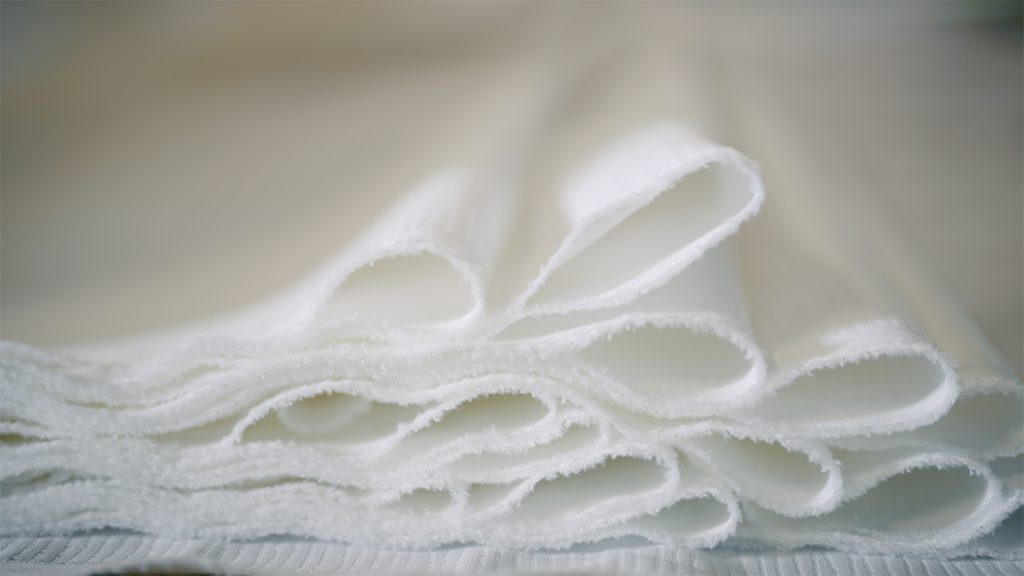Environmentally friendly – eterble’s tableware making-
eterble works on to create tableware that are not only design conscious but also thoughtful to our earth, in order to realize fully sustainable life to come true.
All our carefully selected fabrics are environmentally friendly, from the material itself to its production processes.
There are multiple takes about being “friendly to environemt”.
eterble has first started from considering multiple options. We have reviewed how the traditional tablecloths production is carried out, to see if we can eliminate any waste made. We have reviewed how we select the fabric and the way they are sewn. We have also reviewed to reduce excess products packaging. eterble has stated thinking from multiple perspectives on how we can contribute to the society, in response to the 17 goals of Sustainable Development Goals.

Fabric Selection
From sustainable cotton to “eterble fabric”, which is recycled from rentals tablecloths at hotels, wedding venues, and banquet halls that are not usable, all the fabric that eterble uses are kind to our environment.
1. “eterble fabric” Our Original Recycled Fabric
“eterble fabric” is polyester fabric recycled from party rentals tablecloths, rented out for first class hotels, wedding venues, and banquet halls of which are not usable due to its damages and stains. The cloths material comes from the waste stocked at World Service, who is a leading party rentals company in Japan renting out tablecloths to numerous luxury hotels.
Discarded rentals tablecloths are first cut into pieces by its colors. They are then taken into spinning mill then become recycled threads. Going through advanced technology of spinning, weaving, and sewing, the recycled fabric is manufactured into new tableware products. Manufacturing of tablecloths are carried out by tablecloths craftsmen, and wedding dress seamstresses for any designs which requires intricate sewing techniques. We aim to produce tablecloths thoroughly high in quality.

Traditionally, any of the cut out fabrics and waste made during the manufacturing of tablecloths are discarded and incinerated. The manufacturing environment is hard to describe as “environmentally friendly”. eterble has talked with the craftsmen to reuse the fabric waste. eterble fabric is a fine fabric and is the same when it becomes cut out fabrics. These cut out fabrics are saved and used until the very end, by making them into products such as coaters, cloths napkins, place pats, and tote bags.
Production of eterble fabric reduces the use of multiple resources.
As it uses the discarded rentals tablecloths, of which are normally incinerated, it eliminates the oil used for the incineration and reduces the CO2 emissions. Recycling process is handled by each tablecloth color ways, enabling to produce recycle fabric which maximizes the original color of the material tablecloth, meaning no additional dye is necessary. This leads to reduction in amount of water used and saves water from further pollution. We aim for production which will not require further consumption of resources.
2. Sustainable Cotton Fabric
Cotton is something necessary in our lives. Majority of the cotton materials shared around the globe are produced in farms centered around Asia, where they are still developing countries. Some social problems are emerging including environment pollution by overuse and improper use of pesticide and chemical fertilizers, health issues of people who work there, and child labor and forced labor in the area.
The fabric eterble uses are the products where no hazardous substances are declared in the production process, not produced in hazardous areas with high potential for harm, and that there is no unfair child labor (including health, safety, and moral aspects) associated.
eterble only makes what is necessary, without holding excess stocks and discards as much as possible. We will pursue and foster new ideas of tableware culture that decorates everyone’s dining scenes, together with our low in waste manufacturing methods.